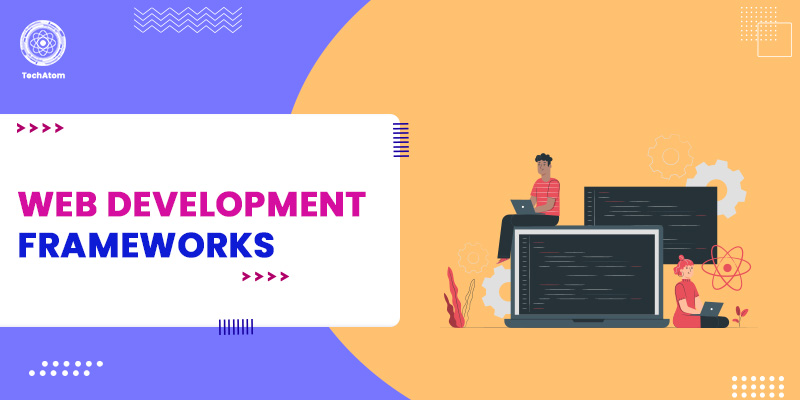When it comes to web development, you cannot ignore the frameworks. As the website development process rapidly improves, the intricacy of technologies is also rising. But when you include a well-structured framework in your plan, you can easily create a website and an impactful user experience.
And since the website consists of two server-sides: backends and client-ends, you will need frameworks suitable for both purposes. This article will include backend and front-end web frameworks that you can use in 2023.
5 Top Web Development Frameworks in 2023
1. Backend Frameworks: Express
Express is a Node.js framework designed for the backend of web apps and APIs of websites. It is a popular framework used by IBM, Accenture, Uber, and many high-end companies. It is also known to be a server-side framework and is fast, lightweight, and minimalistic.
Over the years, Express has gained so much popularity that some frameworks have been built on Express.js, such as KeystoneJS, ItemsAPI, etc. The Express framework has become a vital part of the JavaScript programming language. In 2022, Express was voted one of the most popular backend frameworks because it is powerful, flexible, and supports REST APIs and entire applications.
But the only disadvantage we have witnessed to Express is that it has a very small library, and most of its functions are managed by plugins. Still, it is a great choice for beginners.
Key features
- Caching supported
- Middleware support
- It has numerous templates to design HTML pages
- Minimalistic web apps
Pros
- Flexible
- It is simple to grasp.
- Scalable
- Low maintenance cost
- Great community support.
Cons
- The small core library
2. Backend Frameworks: Django
Django is one of the best backend frameworks that has become popular for creating scalable web apps. This Python-based framework is mostly used for social networking sites but works well with client-side applications. You can use it with any data format, such as JSON, XML, or HTML. Since it is open-sourced, you can change its codes anytime to create a more suitable design for your website.
However, the framework was created for seasoned web developers, and it is the best choice for API integrations such as GraphQL. Django offers several benefits.
According to the Stack Overflow Developer Survey, Django is the hottest framework for backend website development in 2023. Popular online platforms like YouTube, Google, Instagram, etc., are created with this framework. Another thing we must include while talking about Django is its battery-included features. That means you will only get what you need from this framework.
For example, you can choose two-factor authentication, messaging, etc., for your website. But don’t worry; no matter what additional feature you choose, security will always come by default.
Key features
- top-notch security features
- highly scalable
- Built on top of Python
- Battery included; you don’t have to write codes from scratch.
Pros
- SEO optimized
- Fast development
- Versatile, wide community support
Cons
- URL spacing is difficult
3. Backend Frameworks: Spring
Spring is another framework mainly responsible for creating Java-based enterprise apps on top of any kind of deployment platform. It comes with a convenient programming and configuration model that also supports creating web apps on top of Java EE.
Spring is an open-sourced framework with high ratings on GitHub and some great reviews from top-notch companies like Deleo Korea, Craftbase, Meisterplan, and more. And if you want to talk about the security integration of the Spring framework, then you must know that it is integrated with MySQL, AngularJS, Axon, Apache Dubbo, etc., tools.
However, learning how to use the Spring framework might be a little complex if you don’t have experience with the Java programming language. Nevertheless, if you know Java, then you can scale your projects in a jiffy with Spring.
Key features
- Lightweight
- Aspect-Oriented Programming (AOP)
- Container
- Transaction Management
- Integrated with other frameworks
- Dependency injection
Pros
- Developers can employ the Spring framework in web applications.
- It allows link modules for free.
- Different configuration methods
- POJO models that are lightweight
- Middleware support
Cons
- only suitable for large-scale projects
4. Frontend Frameworks: Angular
Google introduced Angular in 2010 and has become instantly popular due to its open-sourced nature. It was rewritten from scratch in 2016 to be appropriate for creating large-scale JavaScript-based web applications with high performance. The framework is suitable for creating web pages, SPAs, and smartphone and desktop applications.
According to a report by Statista, Angular is the most popular framework for front-end web development, used by about 30% of developers worldwide. If you view Angular on GitHub, you will see it has over 75.9k ratings. And since popular companies like Xbox and BMW have used Angular, it is reasonable why the framework has become so popular. Angular applies TypeScript as well as CSS and HTML to create consistency in web development.
Key features
- It reduces the development time.
- The templates are defined with HTML tags.
- Reuse codes
- Open-source libraries
- Angular CLI
- Chrome/Firefox developer tools support
Pros
- Cross-platform compatible
- secure and reliable
- Fast development
- Excellent performance
- Open-source libraries
- Suitable for creating complex websites,
- Examples: YouTube, Xbox, Google Translate
Cons
- SEO options are limited.
5. Frontend Frameworks: Vue
Vue is the alternative to Angular and React. It was created in 2010 and became famous due to its attractive UI. Vue is a JavaScript framework that combines the View Layer from Angular and the Virtual Dom from React. Because of the impressive combination of traits from the most popular frameworks, it won developers’ choice awards in 2014. And nowadays, developers use Vue to create responsive web applications.
If you go to GitHub, you will see it has over 180k user ratings. More than 167k websites have been built using Vue in just a few years. You can create interactive user interfaces with a flexible design supporting TypeScript with Vue. It also offers two-way data binding.
This means that if you change the user interface, that change will be effective on both the data and the interface and the other way around.
Key features
- Virtual DOM
- CLI (Command-line Interface)
- Data Binding
Pros
- Fast and lightweight,
- Flexible
- Easy integration
- community
- easy to understand
- Used by Grammarly, Xiaomi, Alibaba, etc.
Cons
- Instructions and descriptions are written in Chinese
Conclusion
So these are the top 5 web application frameworks that will be in high demand in 2022. Among these frameworks, JavaScript and Python are the most advanced options for creating fast and well-developed websites.
There are, of course, many other frameworks that could be suitable for your particular kind of project, but most of the time, these five are universal and versatile for all kinds of web application development. If you want more guidance on when to use which framework for your business, then you can refer to our other articles.
The five options that we have mentioned in this post are based on our survey data. Feel free to choose one that is compatible with your project. If you need help, we are always available in the comment box below.
People are also reading:




